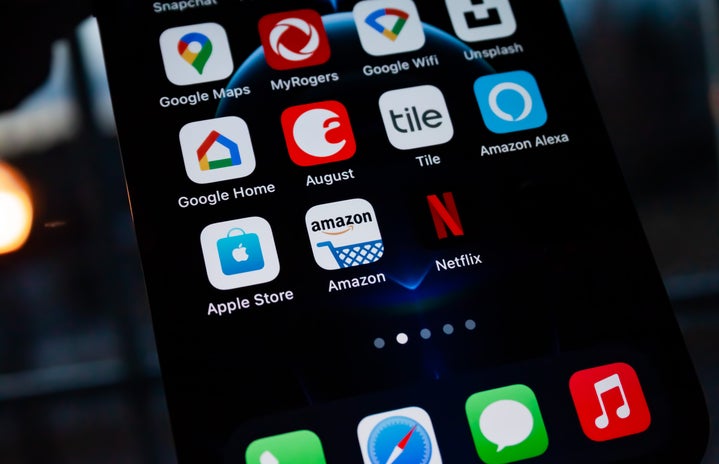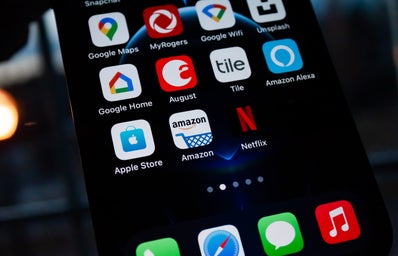I downloaded BeReal in the spring of 2022, just a few months after its popularity started to skyrocket, and I remember feeling like I was late to the party. The initial premise of the app was akin to an “anti” social media—users have no editing or filters to hide behind, and the two-minute window to post once the notification went off screamed living in the moment. I remember being at a party in my first month in university when the BeReal notification went live, and everybody stopped what they were doing, scrambling to take the best photo with the most people in it before the time ran out. It was only a few months later that I started to get bored of BeReal. I found that the notification was starting to come out around the same time of day every day, and because of that, my posts were almost always me studying or just lying around. Over time, I noticed the number of my friends using the app daily was dwindling, and that I was no longer experiencing what I did at that party—the days of putting everything on a two-minute pause to take a photo seemed to be over.
Last year, The New York Times reported that BeReal went from its peak of 15 million daily users in October, 2022, to just 6 million by March of 2023. Something that was the biggest deal a year and a half ago would barely get a second look now. So, what happened to BeReal?
the appeal
To understand why BeReal’s usership declined so sharply, first it’s important to determine what made the app so popular. The idea of using social media informally is a sort of by-product of the COVID-19 pandemic, during which influencer culture was shamed for its lavish lifestyle with little demands, as it was a stark contrast to the experience of the average person during a life-disrupting event. The rise of influencers in the previous years had led to social media being an over-saturated, over-curated lens through which we view how others live their lives. We’ve all heard platforms like Instagram notoriously being referred to as a “Highlight Reel,” not real life. When BeReal came on the scene, primarily using TikTok to promote itself, it was a fresh face appealing to the widespread influencer fatigue being felt.
The novel concept, which became popular after a few different trends of being more “authentic” on social media (photo dumps and “making Instagram casual,” for example) set BeReal apart from other platforms. It wasn’t an app that you could become an influencer on, like TikTok, though elements of its concept did remind me of the core aspects that made Snapchat so exciting in its early days—on BeReal, you can’t see what others have posted without posting your own BeReal, the photos are only up until the next notification comes out, and you can see when someone screenshots your post. Essentially, BeReal brought back the idea of a social media feeling like a club that you just want to get in. What’s everyone I know doing right now? Only one way to find out.
too much of a good thing
Once the number of daily users started dropping, BeReal piloted new features in an attempt to bring back its fan base, such as allowing the opportunity to post bonus BeReals later in the day if you posted in the inital two-minute time frame, or being able to link songs from Spotify to your posts. However, while creative, these features are not imperative to the purpose of the app. When I used the platform, I thought one of the best things about it was that you could only post once a day, because that’s what made it exciting. If you get the option to post a BeReal later, it’s really just feeding into the “Highlight Reel” we know other forms of social media to be.
With TikTok constantly updating its stylistic design, Instagram adding every feature in the book, and Snapchat now moving its features behind a paywall, the social media market seems to be missing the principle of what makes a platform that everybody wants to use: less is more. Apps updating solely for the sake of updating won’t excite old users or appeal to new ones, and BeReal adding “bonus” posts is proof of that.
BeReal’s problem is that it jumped on the features that led to its popularity and tried to increase their function. But this isn’t what users of the app wanted—people loved BeReal because it wasn’t like any social media. It wasn’t an app you could spend hours scrolling on, or one that was curated to show only the best or most exciting parts of life. With the addition of new features, it’s clear that BeReal wasn’t satisfied with being an app that people only used for a few minutes a day… but that’s exclusivity what made it appeal in the first place.
Does Gen Z want to be real?
The rise and fall of BeReal brings into question whether or not a social networking app based on authenticity is a sustainable enough premise to compete with the social media giants we know and use daily. The trend of making social media usage a more honest practice has risen in popularity since the pandemic, but is that all it is—a trend? While BeReal inevitably stunted its own success by over-complicating its design, I wonder whether or not the decline in usership is also symptomatic of the short trend cycle we are seeing across all social media platforms. Being the “anti” social media app, BeReal goes against the tried and true principles that social media operates on: we like engagement with others, we like the validation social media provides, and we love to scroll through meaningless content as a means of entertainment.
Sometimes I miss the days of BeReal being in its prime, when it was two minutes of the day that everyone looked forward to and there was the excitement of never knowing when it would go off. For the most part, though, I’ve already forgotten about it.


